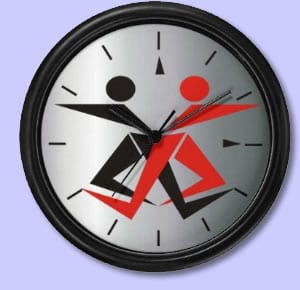For some time, researchers have known that physical education and exercise changes the structure of the brain, resulting in improvements in concentration, fidgeting and creates new brain cells.
The body-mind link is well documented. But current thinking and actions (like eliminating recess and physical education) lead me to question if some decisions reflect the cliché that “our bodies exist to carry our heads around.”Current thinking on the topic, however, acknowledges, “Any thinking has the whole body participating.”
Physiologically it appears that blood flow to the brain stimulates brain growth as a result of physical activity and exercise by oxygenating the brain. Early research indicates that physical exercise defined as “aerobic” exercise induces neuroplasticity changes in different brain regions.
What type of exercise is best for brain growth?
Movement and exercise increase breathing and heart rate so that more blood flows to the brain, enhancing energy production and waste removal. Studies show that in response to exercise, cerebral blood vessels can grow, even in middle-aged sedentary animals.
Walking is especially good for your brain because it increases blood circulation and the oxygen and glucose that reach your brain. Walking is not strenuous, so your leg muscles don’t take up extra oxygen and glucose like they do during other forms of exercise. As you walk, you effectively oxygenate your brain. Maybe this is why walking can “clear your head” and help you to think better.
Run for More Brain Cells-Study
 Put simply this study found that laboratory mice that run regularly sprout more new neurons and retain those neurons longer than sedentary mice. When these mice are sedentary, “it appears that most newly born brain cells die.” However, Carrolee Barlow, a Salk assistant professor and lead author of the, “Run for More Brain Cells Study,” said, “Running appears to ‘rescue’ many of these cells that would otherwise die.”
Put simply this study found that laboratory mice that run regularly sprout more new neurons and retain those neurons longer than sedentary mice. When these mice are sedentary, “it appears that most newly born brain cells die.” However, Carrolee Barlow, a Salk assistant professor and lead author of the, “Run for More Brain Cells Study,” said, “Running appears to ‘rescue’ many of these cells that would otherwise die.”
“Each of these elements alters the way our brain functions,” says Marilyn Albert, Ph.D., of Harvard Medical School. She hypothesizes that regular exercise may actually stimulate blood flow to the brain and nerve growth, both of which create more densely branched neurons, rendering the neurons stronger and better able to resist disease. Moderate aerobic exercise, including long brisk walks and frequently climbing stairs, will accomplish this also.
Furthermore, the miles logged correlated directly with the numbers of increased cells, she said. “It’s almost as if they were wearing pedometers, and those that ran more grew more cells.”
This study builds on work directed by Salk Professor and co-author Fred Gage, showing that running also leads to increased brain cell numbers in normal adult mice, elderly “senior citizen” mice, and a genetically “slow-learning” strain of mice. Gage’s studies have shown that new cell growth occurs in human brains, too. Therefore, this suggests that the boosting effects of running may occur in people as well.
How much exercise is enough?
Castelli notes that a single 10-minute bout of physical activity in an academic setting boosts attention and problem-solving skills in kids. A study published online earlier this month in the British Journal of Sports Medicine, found that mental health benefits were observed after 20 minutes of physical activity, though the more exercise and higher intensity, the better the effects. Which means that doing the recommended 30 minutes a day of aerobic activity will cover your brain as well as your heart.
In Spark: The Revolutionary New Science of Exercise and the Brain![]() , published earlier this year, psychiatrist John Ratey explores the neuroscience behind potential beneficial effects of aerobic exercise on anxiety, stress, depression, learning, aging, and even attention deficit disorder. “Even people who are overweight and who start exercising see improvements in mood and cognition in as little as 12 weeks,” he says. One study found that exercise improved depression symptoms just as well as medication.
, published earlier this year, psychiatrist John Ratey explores the neuroscience behind potential beneficial effects of aerobic exercise on anxiety, stress, depression, learning, aging, and even attention deficit disorder. “Even people who are overweight and who start exercising see improvements in mood and cognition in as little as 12 weeks,” he says. One study found that exercise improved depression symptoms just as well as medication.
Other experiments have shown that aerobic exercise seems to be better for cognitive skills than other types of exercises. In one experiment at the University of Illinois, elderly people were assigned a six-month program of either stretching exercises or one of brisk walking. The group that did the stretching improved their flexibility but they did not improve on cognition tests. The group that walked improve cognitively.
It seems that different growth factors must come from different points in the body to create new neurons and new brain connections. For this to happen there must be a significant change in the flow of blood. Swimming, running or cycling produce this kind of increase in blood flow. Weight lifting stimulates the production of growth factors in muscles that tend to remain in the muscles and don’t find their way to the brain. (Cognifit Online![]() ).
).
Which exercise is best and how long must one exercise to see beneficial changes?
Aerobic exercise appears to be the best at growing brain cells and keeping them alive and healthy. This benefit is generally evident after approximately 12 weeks. However, don’t underestimate the power of recess or physical education. Research has indicated that a 10-minute bout of physical activity results in increased problem-solving skills and attention skills in children upon returning to class.
We return to the original question. Can physical education make you smarter? Continued research in this area is warranted. However, it is clear that physical activity achieved in the physical education environment impacts brain activity in a variety of ways beneficial to learning. You could think of it as “warming-up the brain for learning”.
UPDATE on the Link between Physical Education and the Brain
According to Fox News, “We all know that regular exercise can have dramatic effects on our physical health, as it helps protect us from preventable diseases, but what about our minds? The effects of physical fitness may extend beyond disease and obesity prevention, potentially impacting our intelligence from before birth well into old age.” The body of research continues to grow on the positive benefits of physical activity (PE) and academics.


